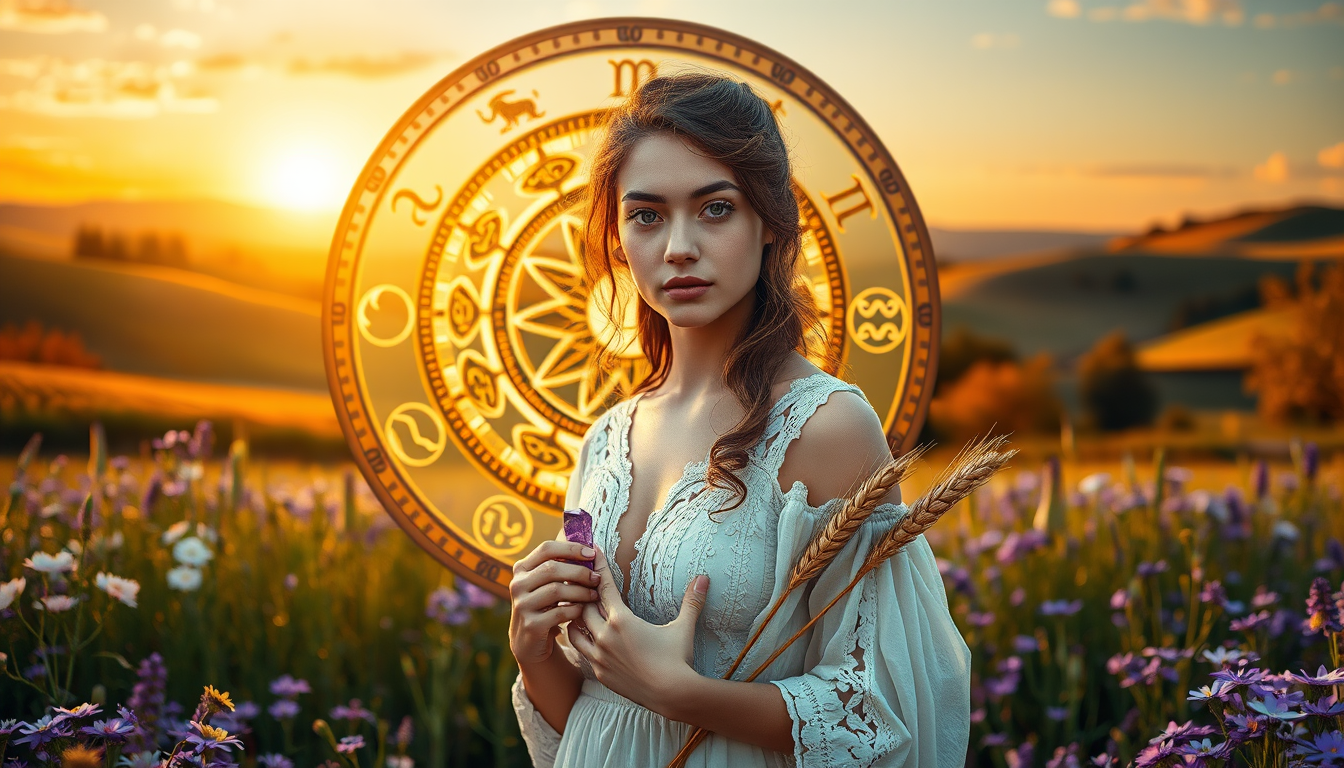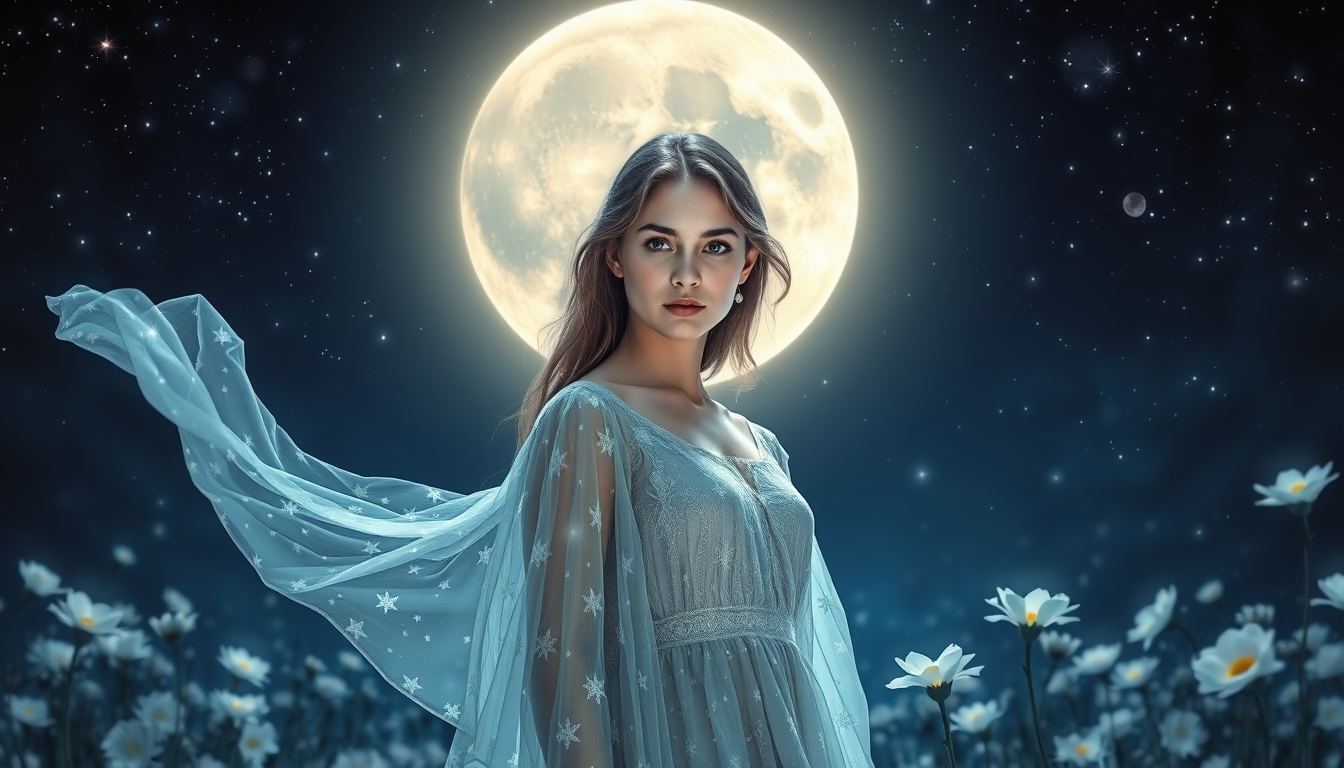What Zodiac Sign Is the Moon in Today? A Complete Guide to Lunar Astrology
Introduction to Lunar Astrology
Lunar astrology focuses on the moon’s position in the zodiac and how it influences our emotions and daily lives. Unlike sun signs which change monthly, the moon moves quickly through all 12 zodiac signs in about 28 days. This means the moon’s astrological sign changes every 2-3 days, affecting our moods and instincts in subtle but noticeable ways.
Understanding what zodiac sign the moon is in today can help you tune into your emotions and plan your activities accordingly. The moon represents our inner world, unconscious mind, and how we instinctively react to situations. By tracking the moon’s movements, we gain insight into our changing feelings and needs.
In this comprehensive guide, we’ll explore how to determine the current moon sign, what each lunar placement means, and how to work with the moon’s energy in your daily life. Whether you’re new to astrology or looking to deepen your lunar knowledge, you’ll find valuable information to connect with the moon’s cycles.
Understanding Moon Signs
Your moon sign represents your emotional nature and instinctive reactions. It’s determined by which zodiac constellation the moon was in at the exact time of your birth. While your sun sign represents your core identity, your moon sign reveals your inner emotional world.
The moon changes signs every 2-3 days as it orbits the Earth. This means that even people born on the same day can have different moon signs depending on the time and location of birth. The moon’s sign at any given moment influences the general emotional atmosphere and how people are likely to react.
Moon signs add depth and nuance to astrological interpretations. They explain why two people with the same sun sign can have very different personalities and emotional needs. Understanding both your sun and moon signs gives a more complete picture of your astrological makeup.
Some key things to know about moon signs:
- They represent your emotional needs and reactions
- They change every 2-3 days
- They influence the general mood and atmosphere
- They add emotional context to your sun sign
- They explain instinctive behaviors and habits
Learning about your personal moon sign can provide valuable self-insight. But tracking the current moon sign is also useful for understanding day-to-day emotional fluctuations and planning activities.
Finding Today’s Moon Sign
To determine what zodiac sign the moon is in today, you have several options:
- Use an online moon sign calculator or app
- Check an astrological calendar or ephemeris
- Consult a lunar almanac
- Follow astrology websites or social media accounts
Many websites and mobile apps provide daily updates on the moon’s sign and phase. Simply enter today’s date to see the current lunar placement. Some popular options include:
- Astro-Seek.com
- Lunarium.co.uk
- MoonGiant.com
- TimeAndDate.com
You can also find moon sign information in astrological calendars, almanacs, and ephemerides. These reference materials list the moon’s position for each day of the year. Local astronomy clubs or metaphysical shops may carry printed versions.
For the most accurate results, make sure to account for your time zone when checking the moon sign. The moon can change signs at different times depending on your location. Using your specific time and place will ensure you have the correct lunar information for your area.
Moon Phases and Their Meanings
The moon’s phases are just as important as its zodiac sign in lunar astrology. As the moon orbits Earth, we see different portions of its illuminated surface, creating the familiar cycle of phases. Each phase has its own energy and significance:
- New Moon: A time for new beginnings, setting intentions, and planting seeds for the future. The sky is dark and the moon is invisible.
- Waxing Crescent: A sliver of the moon becomes visible. This phase is about taking action on new goals and gathering resources.
- First Quarter: The moon appears as a half circle. This represents a time of challenge and decision-making as your intentions begin to manifest.
- Waxing Gibbous: Most of the moon is visible. This phase is about refining your plans and making final preparations.
- Full Moon: The entire face of the moon is illuminated. This is a time of culmination, clarity, and heightened emotions.
- Waning Gibbous: The illuminated portion starts to decrease. This phase is about gratitude, sharing, and distributing the rewards of your efforts.
- Last Quarter: Another half-moon, but on the opposite side. This phase is about release, letting go, and clearing away what’s no longer needed.
- Waning Crescent: Only a slim crescent remains visible. This is a time for rest, reflection, and surrendering to the cycle of change.
The entire cycle takes about 29.5 days to complete. Understanding both the moon’s phase and zodiac sign gives you a complete picture of the lunar energies at play. For example, a New Moon in Aries has a different feel and focus than a Full Moon in Libra.
Many people plan activities and rituals around the moon phases. New Moons are ideal for starting projects, while Full Moons are great for completion and celebration. Waning phases support decluttering and releasing, while waxing phases encourage growth and accumulation.
How Moon Signs Affect Our Emotions
The moon’s zodiac sign has a significant influence on the emotional atmosphere and how people tend to react. Each sign brings its own qualities to our feelings and instincts. Here’s a brief overview of how the moon affects emotions in each sign:
- Aries Moon: Quick reactions, impatience, courage, enthusiasm
- Taurus Moon: Steadiness, sensuality, stubbornness, comfort-seeking
- Gemini Moon: Curiosity, restlessness, sociability, scattered energy
- Cancer Moon: Sensitivity, moodiness, nurturing, nostalgia
- Leo Moon: Warmth, drama, creativity, need for attention
- Virgo Moon: Analysis, perfectionism, helpfulness, worry
- Libra Moon: Harmony-seeking, indecisiveness, charm, people-pleasing
- Scorpio Moon: Intensity, suspicion, passion, emotional depth
- Sagittarius Moon: Optimism, restlessness, honesty, philosophical mood
- Capricorn Moon: Seriousness, ambition, melancholy, responsibility
- Aquarius Moon: Detachment, humanitarianism, eccentricity, friendliness
- Pisces Moon: Empathy, dreaminess, escapism, spiritual connection
These emotional tendencies affect everyone to some degree, regardless of their personal moon sign. Being aware of the current lunar sign can help you understand and navigate the prevailing emotional currents.
For example, during a Taurus Moon, people may feel more drawn to comfort foods and physical pleasures. A Gemini Moon might increase social interactions and mental stimulation. Recognizing these influences can help you make sense of your own changing moods and those of others around you.
Planning Your Day with the Moon
Knowing the moon’s current sign and phase can help you plan activities and make decisions. Here are some tips for working with lunar energies in your daily life:
- Aries Moon: Ideal for starting new projects, physical exercise, and taking initiative
- Taurus Moon: Good for financial planning, gardening, and self-care routines
- Gemini Moon: Perfect for communication, short trips, and learning new skills
- Cancer Moon: Great for home projects, family time, and emotional healing
- Leo Moon: Favors creative pursuits, romantic dates, and leadership roles
- Virgo Moon: Excellent for organizing, health check-ups, and detailed work
- Libra Moon: Ideal for social events, negotiations, and aesthetic improvements
- Scorpio Moon: Good for research, intimacy, and addressing deep issues
- Sagittarius Moon: Perfect for travel, outdoor activities, and expanding horizons
- Capricorn Moon: Favors career planning, setting goals, and practical tasks
- Aquarius Moon: Great for networking, group projects, and innovative thinking
- Pisces Moon: Ideal for spiritual practices, artistic endeavors, and rest
Remember to also consider the moon’s phase. New Moons support beginnings, while Full Moons are good for completion. Waxing phases (between New and Full) encourage growth and action, while waning phases (between Full and New) favor release and reflection.
By aligning your activities with the moon’s energy, you may find tasks flow more smoothly and feel more in tune with natural cycles. However, don’t let the moon’s position stop you from doing what needs to be done. Use this knowledge as a helpful guide, not a strict rule.
Traits of Each Zodiac Moon Sign
Each zodiac sign brings unique qualities to the moon’s emotional influence. Here’s a more detailed look at the traits associated with the moon in each sign:
Aries Moon
People with their natal moon in Aries tend to have quick emotional reactions and a fiery temperament. They’re often courageous, enthusiastic, and impulsive. Aries moon individuals need outlets for their abundant energy and may struggle with patience.
Taurus Moon
A Taurus moon brings steadiness and sensuality to emotions. These individuals often find comfort in routine and physical pleasures. They can be stubborn but also very loyal and dependable. Security and stability are important for Taurus moon people.
Gemini Moon
Those with a Gemini moon are often curious, adaptable, and communicative about their feelings. They may have rapidly changing moods and a need for mental stimulation. Gemini moon individuals usually have a youthful energy and enjoy variety in their emotional experiences.
Cancer Moon
Cancer is the moon’s home sign, so these individuals often have strong intuition and deep emotions. They tend to be nurturing, sensitive, and protective of loved ones. Cancer moon people may struggle with moodiness and need a sense of emotional security.
Leo Moon
A Leo moon brings warmth, creativity, and a need for recognition to the emotional sphere. These individuals often have a flair for drama and enjoy being the center of attention. Leo moon people need to feel special and may have a hard time when their efforts go unnoticed.
Virgo Moon
Those with a Virgo moon often process emotions through analysis and problem-solving. They tend to be helpful, practical, and detail-oriented. Virgo moon individuals may struggle with perfectionism and worry, but they have a strong desire to be of service.
Libra Moon
A Libra moon brings a need for harmony and balance to emotional life. These individuals often have charm, diplomacy, and a strong sense of fairness. Libra moon people may struggle with indecisiveness as they try to weigh all sides of a situation.
Scorpio Moon
Those with a Scorpio moon tend to have intense, deep emotions and strong intuition. They’re often passionate, resourceful, and drawn to exploring life’s mysteries. Scorpio moon individuals may struggle with trust issues but are capable of profound emotional transformation.
Sagittarius Moon
A Sagittarius moon brings optimism, honesty, and a philosophical outlook to emotions. These individuals often have a love of freedom and adventure. Sagittarius moon people may struggle with restlessness but have a gift for finding meaning in their experiences.
Capricorn Moon
Those with a Capricorn moon often approach emotions with seriousness and practicality. They tend to be responsible, ambitious, and good at setting boundaries. Capricorn moon individuals may struggle with melancholy but have great emotional endurance.
Aquarius Moon
An Aquarius moon brings uniqueness and humanitarian concerns to the emotional realm. These individuals often have an unconventional outlook and value their independence. Aquarius moon people may struggle with emotional detachment but have a strong sense of social justice.
Pisces Moon
Those with a Pisces moon tend to have deep empathy and a strong connection to the collective unconscious. They’re often imaginative, compassionate, and spiritually inclined. Pisces moon individuals may struggle with setting boundaries but have a gift for emotional healing.
Moon Transits Through the Zodiac
The moon’s journey through the zodiac is called a lunar transit. It takes about 2-3 days for the moon to move through each sign, completing a full cycle in roughly 28 days. These transits affect the general emotional atmosphere and can influence how we feel and react on a day-to-day basis.
Here’s a brief overview of what to expect during each lunar transit:
- Moon in Aries: Increased energy, impulsiveness, and desire for new experiences
- Moon in Taurus: Focus on comfort, stability, and sensual pleasures
- Moon in Gemini: Enhanced communication, curiosity, and mental activity
- Moon in Cancer: Heightened sensitivity, nurturing instincts, and need for security
- Moon in Leo: Boost in confidence, creativity, and desire for recognition
- Moon in Virgo: Attention to details, health concerns, and desire to be helpful
- Moon in Libra: Focus on relationships, harmony, and aesthetic appreciation
- Moon in Scorpio: Intensified emotions, desire for depth, and transformative experiences
- Moon in Sagittarius: Optimism, philosophical outlook, and urge for adventure
- Moon in Capricorn: Increased ambition, practicality, and sense of responsibility
- Moon in Aquarius: Focus on individuality, social causes, and innovative thinking
- Moon in Pisces: Enhanced intuition, empathy, and spiritual connection
These transits affect everyone, but you may feel them more strongly if they activate important points in your natal chart. Paying attention to lunar transits can help you understand and work with the changing emotional energies around you.
The Void-of-Course Moon
A special lunar condition to be aware of is the Void-of-Course (VOC) moon. This occurs when the moon has made its last major aspect to another planet in its current sign but hasn’t yet entered the next sign. During this time, which can last anywhere from a few minutes to several hours, the moon is said to be “void of course.”
Traditionally, VOC moon periods are considered less favorable for starting new projects or making important decisions. The energy can feel unfocused or lacking in direction. However, these times can be excellent for:
- Reflection and meditation
- Completing ongoing tasks
- Routine activities
- Creative brainstorming without commitment
- Rest and recharging
Many astrologers recommend avoiding major purchases, signing contracts, or launching new ventures during VOC moon times. However, if you must take action during these periods, double-check all details and be prepared for unexpected outcomes.
The frequency and duration of VOC moons vary depending on the moon’s speed and the aspects it makes. Some days may have no VOC period, while others might have several hours of VOC time. Checking an astrological calendar or VOC moon calculator can help you plan around these periods.
Moon in Astrology vs Astronomy
It’s important to understand the difference between the moon’s astrological position and its astronomical location. Astrology uses a symbolic zodiac based on the seasons, while astronomy deals with the moon’s actual position against the backdrop of constellations.
In astrology, the zodiac is divided into 12 equal segments of 30 degrees each, starting from the vernal equinox point (0° Aries). This system, known as the tropical zodiac, is the most commonly used in Western astrology. It doesn’t correspond directly to the constellations in the sky due to the precession of the equinoxes.
Astronomically, the moon’s position is described in terms of its celestial coordinates and which constellation it appears in from Earth’s perspective. The astronomical constellations vary in size and don’t align perfectly with the astrological signs.
This means that when an astrologer says the moon is in a particular sign, it may not be in that corresponding constellation in the night sky. For example, an astrological “Aries Moon” might actually be in front of the constellation Pisces astronomically.
Both systems have their uses:
- Astrological moon signs are used for interpreting emotional influences and personality traits
- Astronomical moon positions are used for navigation, timing natural phenomena, and scientific study
Understanding this distinction can help avoid confusion when comparing astrological information with astronomical observations. Both perspectives offer valuable insights into the moon’s movements and influences.
How to Calculate Your Moon Sign
To find your personal moon sign, you’ll need more than just your birth date. The moon changes signs every 2-3 days, so the exact time and location of your birth are crucial for an accurate calculation. Here’s how to determine your moon sign:
- Gather your birth information:
- Date of birth
- Exact time of birth
- Place of birth (city and country)
- Use an online calculator: Many websites offer free moon sign calculators. Simply input your birth details to get your result. Some reliable options include:
- Astro.com
- Cafeastrology.com
- Astro-seek.com
- Consult an ephemeris: For those who prefer manual calculation, an astrological ephemeris provides the moon’s position for any given date and time. You’ll need to adjust for your birth time and location.
- Get a professional reading: An astrologer can calculate your moon sign as part of a complete birth chart reading, providing detailed interpretation along with the basic information.
If you don’t know your exact birth time, you can still narrow down your possible moon sign to two or three options based on the date and location. However, for a definitive answer, an accurate birth time is necessary.
Once you know your moon sign, you can explore its meaning and how it influences your emotional nature and instinctive reactions. Remember, your moon sign is just one part of your astrological makeup – for a complete picture, consider how it interacts with your sun sign and other planetary placements in your birth chart.
Moon Sign Compatibility
Moon sign compatibility is an important factor in astrological relationship analysis. While sun sign compatibility is more commonly discussed, moon sign connections can reveal a lot about emotional harmony between people. Here are some general guidelines for moon sign compatibility:
- Same Element: Moon signs in the same element (Fire, Earth, Air, Water) often have good emotional understanding. For example, a Cancer moon might connect well with a Pisces or Scorpio moon.
- Complementary Elements: Fire and Air moons can spark each other’s enthusiasm, while Earth and Water moons can provide mutual nurturing. For instance, an Aries moon might click with a Gemini moon.
- Opposite Signs: Moons in opposite signs can create a dynamic balance, though there may be some tension. For example, a Taurus moon opposite a Scorpio moon can be intensely attracted but also challenged by each other.
- Square Aspects: Moons that square each other (90 degrees apart) may face emotional conflicts but can also motivate growth. A Leo moon square a Scorpio moon might struggle with power dynamics but can learn a lot from each other.
- Trine Aspects: Moons in trine (120 degrees apart) often have an easy, harmonious flow of emotions. An Aquarius moon trine a Libra moon might find great intellectual and social compatibility.
Remember, these are general patterns. Individual compatibility depends on many factors in the complete birth charts of both people. Moon sign compatibility is just one piece of the puzzle, albeit an important one for emotional connection.
Some particularly compatible moon sign pairings include:
- Aries Moon with Leo or Sagittarius Moon
- Taurus Moon with Virgo or Capricorn Moon
- Gemini Moon with Libra or Aquarius Moon
- Cancer Moon with Scorpio or Pisces Moon
However, any combination can work with understanding and effort. Differences in moon signs can also provide opportunities for growth and balance in a relationship.
Lunar Gardening and Agriculture
Lunar gardening is the practice of planting, cultivating, and harvesting crops according to the phases and signs of the moon. This ancient technique is based on the idea that the moon’s gravitational pull affects water in the soil and sap in plants, just as it influences the tides.
Here are some basic principles of lunar gardening:
- New Moon to First Quarter: Good for planting above-ground crops with exterior seeds (e.g., lettuce, spinach, broccoli)
- First Quarter to Full Moon: Ideal for planting above-ground crops with interior seeds (e.g., tomatoes, peppers, beans)
- Full Moon to Last Quarter: Best for root crops and bulbs (e.g., potatoes, carrots, onions)
- Last Quarter to New Moon: Focus on soil preparation, weeding, and pest control
In addition to the moon’s phases, its zodiac sign is also considered:
- Water Signs (Cancer, Scorpio, Pisces): Good for leafy vegetables and plants needing lots of water
- Earth Signs (Taurus, Virgo, Capricorn): Favorable for root crops and hardy plants
- Air Signs (Gemini, Libra, Aquarius): Best for flowers and vining plants
- Fire Signs (Aries, Leo, Sagittarius): Ideal for fruits and crops needing warmth
While scientific evidence for lunar gardening is limited, many gardeners report success with these methods. At the very least, following a lunar planting calendar can help create a consistent gardening routine and deeper connection with natural cycles.
Some farmers and vintners also apply lunar principles to larger-scale agriculture and wine-making, believing it enhances crop quality and yield. Whether you’re tending a small herb garden or managing acres of crops, experimenting with lunar gardening can be an interesting way to align your agricultural practices with celestial rhythms.
Moon Rituals and Spiritual Practices
Many spiritual traditions incorporate moon-based rituals and practices. These can range from simple personal observances to elaborate group ceremonies. Here are some common moon-related spiritual activities:
- New Moon Intentions: Setting goals and planting seeds for new beginnings
- Full Moon Releases: Letting go of what no longer serves you and celebrating completions
- Moon Water: Charging water under moonlight for ritual use or drinking
- Lunar Meditation: Focusing on the moon’s energy during meditation practices
- Moon Bathing: Basking in moonlight for energetic cleansing and renewal
- Crystal Charging: Placing crystals in moonlight to cleanse and energize them
- Lunar Journaling: Writing reflections and insights aligned with moon phases
- Moon Circles: Gathering with others to share intentions and celebrate lunar cycles
The specific rituals often vary depending on the moon’s phase and zodiac sign. For example:
- A New Moon in Aries might focus on setting bold, action-oriented intentions
- A Full Moon in Taurus could involve gratitude practices and sensory experiences
- A Waning Moon in Scorpio might be ideal for deep emotional release work
Many people find that aligning their spiritual practices with lunar cycles helps them feel more connected to nature’s rhythms and their own inner wisdom. However, it’s important to approach these practices in a way that feels authentic and meaningful to you personally.
Remember, you don’t need elaborate rituals to work with lunar energy. Simply taking a moment to observe the moon and reflect on its cyclical nature can be a powerful spiritual practice in itself.
Moon Myths and Legends
The moon has inspired myths, legends, and folklore in cultures around the world for thousands of years. Here are some interesting moon-related stories and beliefs:
- Man in the Moon: Many cultures see a face or figure in the moon’s surface. In Western tradition, it’s often a man, while in East Asian folklore, it’s usually a rabbit.
- Lunar Deities: Numerous gods and goddesses are associated with the moon, such as Selene (Greek), Chang’e (Chinese), and Thoth (Egyptian).
- Werewolves: The full moon is said to trigger the transformation of humans into wolves in European folklore.
- Moon Madness: The term “lunatic” comes from the belief that the full moon could cause temporary insanity.
- Lunar Eclipse Myths: Many cultures have stories about creatures trying to eat the moon during an eclipse, like the Mayan jaguar or the Vietnamese frog.
- Moon Phases and Fertility: Some traditions link the moon’s cycles to human fertility and childbirth.
- Harvest Moon: The full moon nearest the autumn equinox is celebrated in many agricultural societies for providing extra light for the harvest.
- Blue Moon: The phrase “once in a blue moon” refers to the rare occurrence of a second full moon in a calendar month.
While many of these myths have been disproven by science, they continue to captivate our imagination and influence cultural practices. The moon’s ever-changing appearance and mysterious influence on Earth have made it a rich source of symbolism and storytelling throughout human history.
Modern astronomy has revealed the true nature of the moon as Earth’s only natural satellite, formed from debris after a collision between Earth and a Mars-sized object billions of years ago. Yet even with this scientific understanding, the moon continues to inspire awe and wonder in people around the world.
Frequently Asked Questions
1. How often does the moon change signs?
The moon changes zodiac signs approximately every 2-3 days, completing a full cycle through all 12 signs in about 28 days.
2. Can the moon be in two signs on the same day?
Yes, the moon can transition from one sign to another during a single day. This is why it’s important to know the exact time of the moon’s ingress (entry) into a new sign.
3. How does my moon sign affect me?
Your moon sign influences your emotional nature, instinctive reactions , and inner needs. It represents your subconscious mind and how you process emotions. Understanding your moon sign can provide insight into your comfort zones, what makes you feel secure, and how you nurture yourself and others.
4. Is the moon sign more important than the sun sign?
Neither is inherently more important; they represent different aspects of your personality. The sun sign represents your core identity and conscious self, while the moon sign reflects your emotional nature and subconscious mind. Both are essential for a complete astrological picture.
5. How can I use knowledge of the current moon sign in my daily life?
Understanding the current moon sign can help you anticipate emotional trends, plan activities that align with the prevailing energy, and make sense of your own and others’ reactions. For example, you might choose to schedule important conversations during a Gemini moon when communication flows more easily.
6. Do moon signs affect compatibility in relationships?
Yes, moon sign compatibility can be an important factor in relationships, especially regarding emotional understanding and intimacy. People with compatible moon signs often find it easier to connect on an emotional level and understand each other’s needs intuitively.
7. Can my moon sign change over time?
Your natal moon sign, determined by the moon’s position at your birth, remains constant throughout your life. However, the transiting moon’s sign changes every few days, influencing your current emotional state and experiences.
8. How accurate are online moon sign calculators?
Online moon sign calculators can be quite accurate if you input the correct birth information, including the exact time and location. However, for the most precise results, especially if you were born near a sign change, it’s best to consult a professional astrologer.
9. What’s the difference between the moon sign and the rising sign?
The moon sign represents your emotional nature and instinctive reactions, while the rising sign (or ascendant) represents your outward personality and how others perceive you. The rising sign changes approximately every two hours, making it even more time-sensitive than the moon sign.
10. How does the void-of-course moon affect daily activities?
During void-of-course periods, new ventures or important decisions may face unexpected challenges or fail to progress as planned. These times are better suited for reflection, completion of ongoing tasks, and routine activities rather than starting new projects or making significant commitments.
Conclusion
Understanding what zodiac sign the moon is in today and how it affects our daily lives can be a powerful tool for self-awareness and personal growth. By tuning into the moon’s energy, we can better navigate our emotions, plan our activities, and connect with the natural rhythms of the universe.
Remember that while astrology can provide valuable insights, it’s just one perspective on the complex tapestry of human experience. Use this knowledge as a guide to enhance your understanding of yourself and others, but always trust your own intuition and judgment.
Whether you’re a seasoned astrology enthusiast or just beginning to explore lunar influences, there’s always more to learn about the moon’s fascinating journey through the zodiac. Keep observing, keep questioning, and keep growing as you dance with the ever-changing lunar energies.
As you continue your exploration of lunar astrology, consider keeping a moon journal to track how different moon signs and phases affect your mood and experiences. Over time, you may discover patterns that help you work more harmoniously with these celestial cycles.
Finally, remember that the moon’s influence is just one factor among many in the grand cosmic dance. Your free will, personal experiences, and individual choices all play crucial roles in shaping your life. Let the moon be a gentle guide and source of inspiration as you navigate your unique path through the stars.









